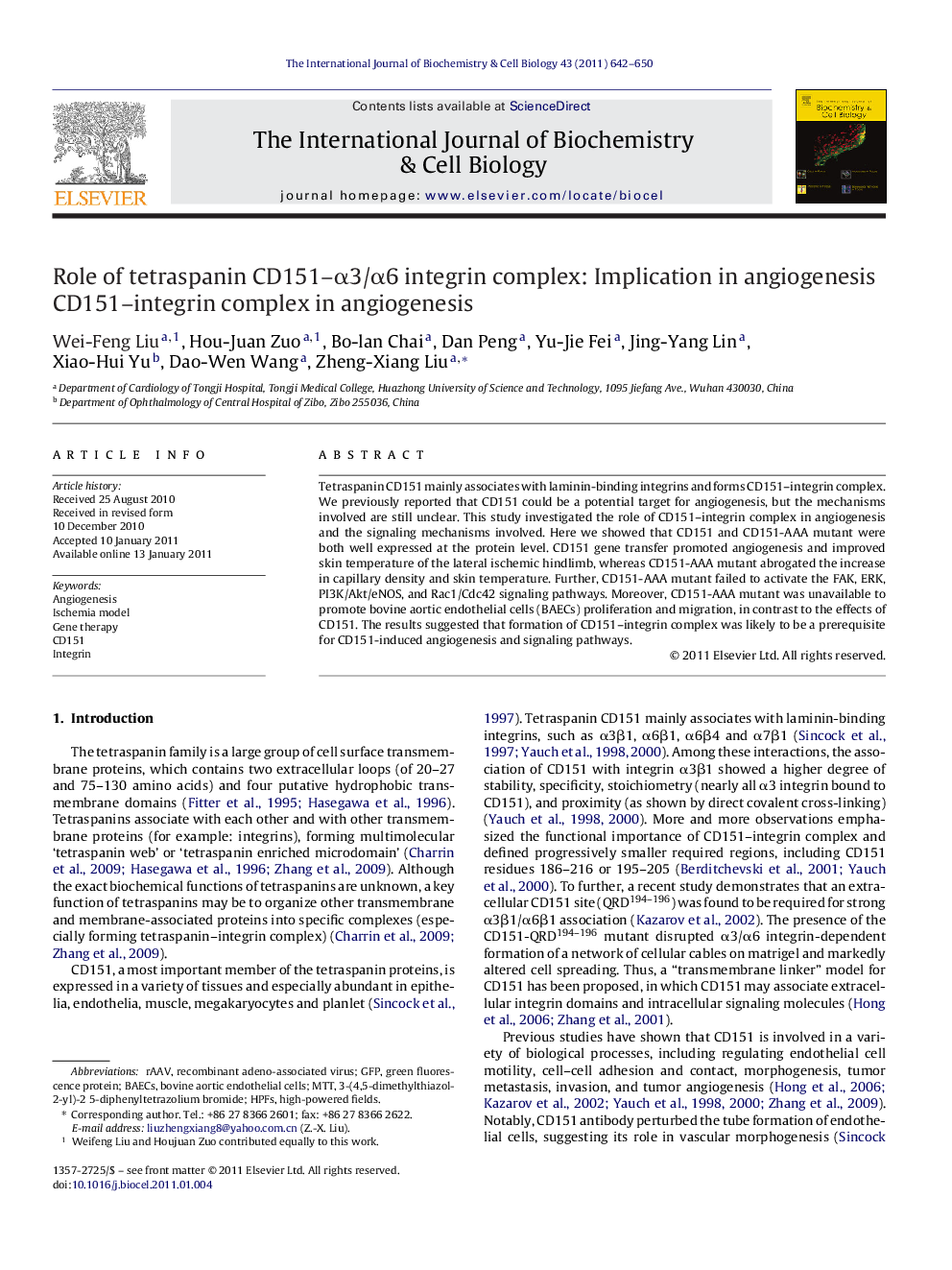| Article ID | Journal | Published Year | Pages | File Type |
|---|---|---|---|---|
| 1984136 | The International Journal of Biochemistry & Cell Biology | 2011 | 9 Pages |
Tetraspanin CD151 mainly associates with laminin-binding integrins and forms CD151–integrin complex. We previously reported that CD151 could be a potential target for angiogenesis, but the mechanisms involved are still unclear. This study investigated the role of CD151–integrin complex in angiogenesis and the signaling mechanisms involved. Here we showed that CD151 and CD151-AAA mutant were both well expressed at the protein level. CD151 gene transfer promoted angiogenesis and improved skin temperature of the lateral ischemic hindlimb, whereas CD151-AAA mutant abrogated the increase in capillary density and skin temperature. Further, CD151-AAA mutant failed to activate the FAK, ERK, PI3K/Akt/eNOS, and Rac1/Cdc42 signaling pathways. Moreover, CD151-AAA mutant was unavailable to promote bovine aortic endothelial cells (BAECs) proliferation and migration, in contrast to the effects of CD151. The results suggested that formation of CD151–integrin complex was likely to be a prerequisite for CD151-induced angiogenesis and signaling pathways.
